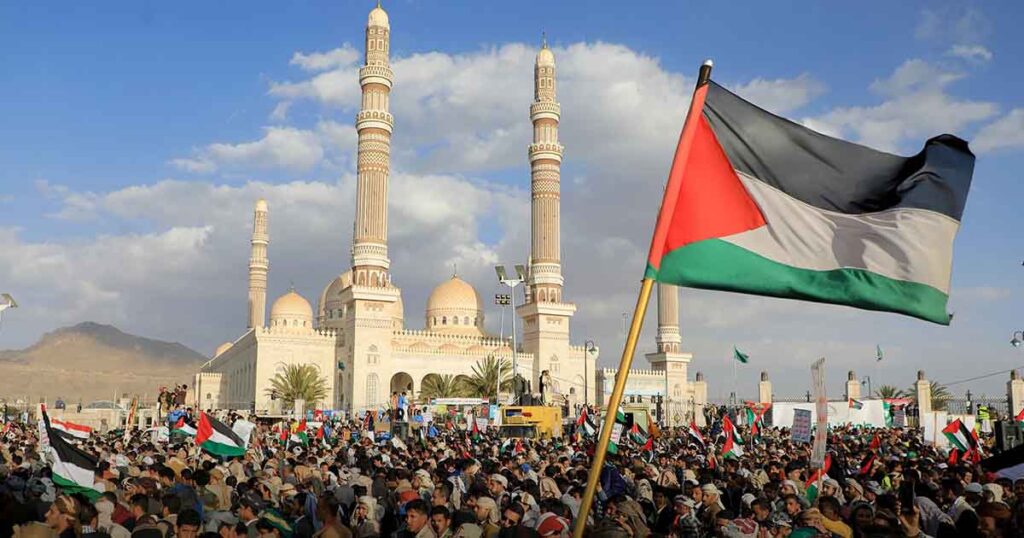The Middle East has once again become a focal point of global concern as intensified military operations in Gaza exacerbate an already dire humanitarian situation. The conflict has resulted in widespread destruction, a staggering loss of civilian life, and heightened scrutiny of human rights violations. While the international community grapples with responses, the people of Gaza bear the brunt of the violence, facing acute shortages of essential supplies, displacement, and long-term trauma.

This article delves into the unfolding crisis, its humanitarian dimensions, and the urgent need for a sustainable resolution.
Background: The Escalation in Gaza
Gaza has long been a flashpoint in the Israeli-Palestinian conflict. Recent military escalations have seen intense airstrikes and ground operations targeting militant groups like Hamas. These operations, while aimed at neutralizing security threats, have inflicted devastating collateral damage:
- Residential neighborhoods, hospitals, and schools have been destroyed.
- Thousands of civilians, including women and children, have been killed or injured.
- Essential infrastructure such as power grids and water systems lies in ruins, plunging the region into a humanitarian nightmare.

Humanitarian Impact: A Crisis Beyond Borders
1. Civilian Casualties
- The high civilian death toll has drawn sharp criticism from human rights organizations, who argue that international laws protecting civilians in conflict zones are being ignored.
- Survivors face lifelong injuries, psychological trauma, and the loss of entire families.
2. Mass Displacement
- Over 1 million people have been displaced, seeking refuge in overcrowded shelters or neighboring regions.
- Many shelters lack basic amenities, leaving displaced populations vulnerable to disease and malnutrition.
3. Destruction of Essential Services
- Gaza’s healthcare system, already under strain, is on the brink of collapse due to damaged hospitals, a lack of medical supplies, and power shortages.
- Food and water scarcity has worsened as supply chains are disrupted, forcing reliance on intermittent international aid.
4. Long-Term Psychological Impact
- Children, who make up a significant portion of Gaza’s population, are growing up in an environment of constant fear and violence, with irreversible effects on their mental health and future prospects.
Global Human Rights Concerns
Human rights organizations have flagged several violations:
- Indiscriminate Targeting: Allegations that military operations have failed to distinguish between combatants and civilians.
- Blockade Impacts: The long-standing blockade on Gaza severely restricts access to humanitarian aid, exacerbating the crisis.
- Lack of Accountability: Calls for independent investigations into potential war crimes have grown louder but face significant political obstacles.
International Response: Divided and Delayed
1. Calls for Ceasefire
- The United Nations and global powers have urged for an immediate ceasefire to prevent further loss of life.
- However, peace efforts are hindered by deep-seated mistrust between the parties involved.
2. Humanitarian Aid
- Countries and organizations have pledged aid, but delivery remains inconsistent due to security concerns and logistical challenges.
- Humanitarian corridors have been proposed but are often delayed by ongoing hostilities.
3. Polarized Global Opinions
- Western nations like the U.S. often back Israel’s right to self-defense, while many nations in the Global South emphasize the plight of Palestinians and demand an end to the occupation.
- This polarization complicates collective action in international forums.
Challenges to Peace and Recovery
1. Lack of Trust
Decades of failed peace processes have left both sides skeptical of negotiations, with hardline factions gaining influence.
2. Cyclical Violence
The absence of a sustainable solution leads to periodic escalations, trapping civilians in a perpetual cycle of conflict and recovery.
3. Humanitarian Dependence
With infrastructure destroyed and economies crippled, Gaza’s reliance on international aid undermines long-term self-sufficiency.
Pathways Forward: Breaking the Cycle
- Immediate Humanitarian Relief
- Unrestricted access for aid organizations to provide food, medical supplies, and shelter.
- Establishing safe zones for displaced populations.
- International Accountability
- Independent investigations into alleged war crimes to ensure accountability on all sides.
- Strengthening international laws protecting civilians in conflict zones.
- Resumption of Peace Talks
- Reviving negotiations with renewed commitment to a two-state solution or other frameworks acceptable to both parties.
- Involving regional players and international mediators to rebuild trust.
- Addressing Root Causes
- Lifting the blockade on Gaza to restore economic activity and improve living conditions.
- Tackling long-standing grievances related to land, sovereignty, and rights.
Conclusion: A Humanitarian and Moral Imperative
The ongoing conflict in Gaza is not just a regional issue but a global moral crisis. The humanitarian toll demands urgent action, not only to alleviate immediate suffering but to address the underlying causes of this decades-long conflict.
For the people of Gaza, peace is more than the absence of war—it is the promise of dignity, stability, and hope for a better future. The international community must rise to this challenge, ensuring that the voices of the vulnerable are heard and protected in the pursuit of lasting peace.






